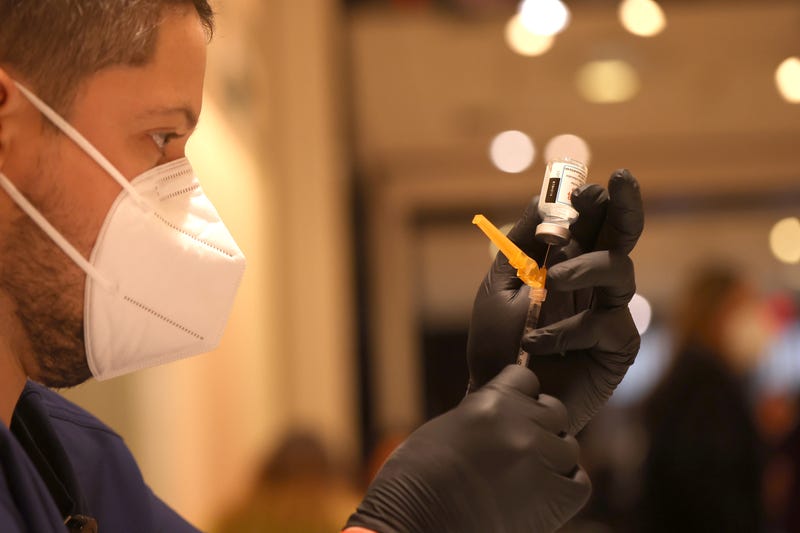
SAN FRANCISCO (KCBS RADIO) – After the U.S. Food and Drug Administration's emergency authorization of omicron-specific COVID-19 boosters Wednesday morning, the updated shots have one last federal hurdle to clear before becoming available in as soon as a few days.
For more, stream KCBS Radio now.
The U.S. Centers for Disease Control and Prevention still needs to give its go-ahead, which could come as soon as Thursday when the agency’s vaccine advisory committee meets. That's despite an absence of clinical tests in humans, as Dr. Amish Adalja explained during KCBS Radio's "Ask An Expert" on Wednesday.
Adalja, Senior Scholar at the Johns Hopkins Center for Health Security, noted to Melissa Culross that the Pfizer booster – which targets the BA.5 strain, now the most dominant of the virus – has only been used in clinical trials with mice. Human trials are set to begin in September, but some public health officials have argued that urgency is of the utmost importance as the seasons change.
"We're worried about the fact that BA.5 is the dominant variant," he said on Wednesday. "It’s immune-evasive, that's been causing an increase in infection for some time now. We're heading into the fall where we know respiratory viruses accelerate their transmission, and they're trying to improve the protection of the population against infection as quickly as possible."
Adalja said there is enough data to suggest the updated boosters are safe for humans. What the data doesn't yet show is whether the omicron-specific strains offer improved protection over the other readily available booster doses.
Moderna published clinical data last month showing that its booster – which targeted the BA.1 strain – produced an improved antibody response to the BA.4 and BA.5 subvariants over existing boosters, while the mice Pfizer tested had improved immune response to all omicron strains.
"What I want to know is: Is that increased neutralizing antibody titer that they saw against the omicron variant – what does that mean in the real world?" Adalja said. "It means something in a lab for sure, but does that turn into a meaningful, clinical benefit, meaning is it worth it vs. the others?"
Defenders of developing these boosters without clinical human trials have pointed to yearly updates of the influenza vaccine, which undergo a similar process. Critics, meanwhile, have said they fear whether the lack of human trials will lead to a slower vaccination uptake.
Although a higher percentage of residents in every Bay Area county (at least 61.2%) have been boosted than California as a whole (58.8%), booster adoption rates are far lower than vaccination rates. Fewer than half of all fully vaccinated Americans (48.5%) have received an additional dose beyond their initial series.
Federal health officials are betting that following the same process as the initial vaccine rollout will leave the country ill-equipped to handle potential surges this fall and winter.
"I think that's behind the impetus to get this done as quickly as possible even if we don't have all the clinical data that would give us a really truly informed decision," Adalja added.
Editor's Note: During Wednesday's interview, Adalja incorrectly stated the Moderna vaccine targets the BA.1 strain of the omicron variant, while it in fact targets the newer BA.4 and BA.5 strains.
DOWNLOAD the Audacy App
SIGN UP and follow KCBS Radio
Facebook | Twitter | Instagram

